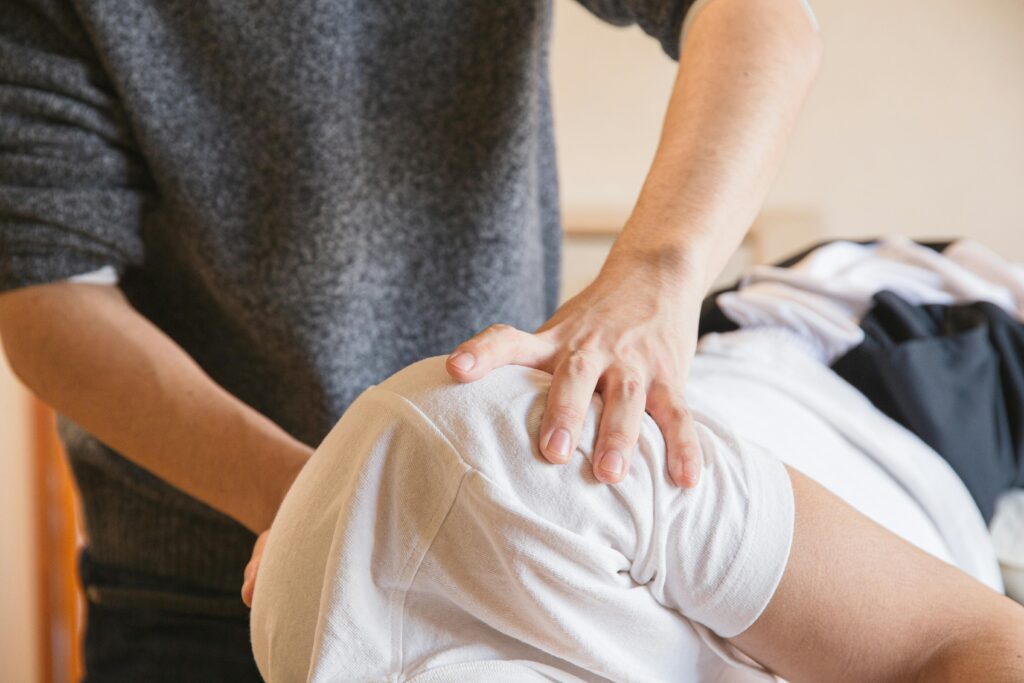Bike Riding and Weight Loss Made Simple for Beginners

If you’re looking for an enjoyable, effective, and beginner-friendly way to lose weight, bike riding might be your perfect match. It’s not just a childhood pastime—it’s a proven method to burn calories, boost your metabolism, and improve your overall health. Whether you’re a fitness newbie or revisiting cycling after years, this guide will help you understand how to leverage bike riding to achieve your weight loss goals.
The Science Behind Bike Riding and Weight Loss
1. High Calorie Burn in a Fun Way
Cycling is a cardiovascular exercise, and it’s excellent for burning calories. A 70 kg (154 lb) individual burns approximately:
- 300 calories in 30 minutes of moderate cycling.
- 450 calories in 30 minutes of vigorous cycling.
The key here is consistency. Regular cycling helps create a calorie deficit, which is essential for weight loss.
2. Improves Your Body’s Fat-Burning Efficiency
Bike riding is a form of aerobic exercise, meaning it primarily uses fat as a fuel source during low to moderate-intensity rides. Over time, cycling increases your body’s ability to utilize stored fat, making it easier to shed unwanted pounds.
3. Builds Lean Muscle
While many view cycling as just a calorie-burning activity, it’s also a strength builder. It engages muscles in your lower body, including your quads, hamstrings, calves, and glutes. These muscles burn more calories at rest, aiding long-term weight loss.
4. Low Impact for All Fitness Levels
Unlike running, cycling is low-impact, which means it’s gentler on your joints. This makes it ideal for people with joint pain, older adults, or those recovering from injuries who still want to lose weight.
Hidden Benefits of Bike Riding for Weight Loss
1. Activates Your Core
Although cycling primarily targets the lower body, maintaining balance and proper posture engages your core muscles. A strong core enhances overall stability and can improve your cycling performance.
2. Eases Stress and Emotional Eating
Bike riding has a meditative quality. The rhythmic motion and connection with nature during outdoor cycling can significantly reduce stress. Lower stress levels often translate to fewer cravings for comfort foods, which can sabotage weight loss efforts.
3. Improves Sleep Quality
Cycling improves sleep patterns by promoting better circulation and reducing stress hormones. A well-rested body is more likely to regulate hunger hormones effectively, making it easier to stick to a weight loss plan.
4. Encourages Consistency
Unlike repetitive gym routines, cycling offers variety. You can ride in your neighborhood, explore scenic trails, or join cycling clubs. The sense of adventure keeps you motivated and consistent.
How to Start Bike Riding for Weight Loss: Step-by-Step Guide
1. Pick the Right Bike
- Road Bike: Lightweight and fast, ideal for smooth pavements.
- Mountain Bike: Sturdy and designed for off-road trails.
- Hybrid Bike: A combination of road and mountain bikes, perfect for beginners.
Visit a local bike shop to get a professional fitting. A properly sized bike minimizes discomfort and reduces the risk of injury.
2. Set SMART Goals
- Specific: Ride 3 times a week for 30 minutes.
- Measurable: Track your distance and calories burned.
- Achievable: Start with flat terrain before attempting hills.
- Relevant: Focus on weight loss and improving fitness.
- Time-Bound: Aim to lose 5 kg (11 lbs) in 3 months.
3. Equip Yourself
- Helmet: Essential for safety.
- Cycling Shorts: Prevent chafing and add comfort for longer rides.
- Reflective Gear: For visibility during early morning or late evening rides.
4. Learn Proper Technique
- Keep your back straight and shoulders relaxed.
- Use your legs to pedal instead of relying on your upper body.
- Maintain a steady cadence (around 60–90 revolutions per minute).
5. Mix It Up
Variety is crucial to prevent plateaus. Incorporate different types of rides:
- Short, intense rides for calorie burn.
- Long, leisurely rides for endurance.
- Hill climbs to build strength.
Diet and Nutrition Tips for Cyclists
Cycling alone won’t guarantee weight loss—it must be paired with proper nutrition.
1. Fuel Before Rides
Eat a small meal with carbohydrates and protein 30–60 minutes before riding. Examples:
- A banana with peanut butter.
- Greek yogurt with berries.
2. Stay Hydrated
Dehydration can reduce performance and increase fatigue. Drink water before, during, and after your ride. For rides longer than an hour, consider a sports drink with electrolytes.
3. Post-Ride Recovery
Consume a protein-rich snack within 30 minutes after your ride to support muscle recovery. Examples:
- A protein shake.
- Grilled chicken salad.
4. Watch Portion Sizes
Cycling can make you hungrier. Be mindful of portion sizes to avoid overeating and undoing your calorie deficit.
Advanced Tips for Weight Loss Through Bike Riding
1. Intermittent Fasting and Bike Riding
For experienced cyclists, combining intermittent fasting with bike riding can enhance fat burning. Riding in a fasted state (e.g., before breakfast) forces your body to use stored fat as energy.
2. Commuting by Bike
Replace short car trips with bike rides. Commuting by bike not only burns calories but also integrates exercise into your daily routine effortlessly.
3. Use a Heart Rate Monitor
Monitor your heart rate to stay in the fat-burning zone, which is typically 60-70% of your maximum heart rate. This ensures optimal calorie burn.
FAQs About Bike Riding and Weight Loss
1. How much weight can I lose with cycling?
The amount of weight you can lose depends on your calorie deficit and consistency. With 3–4 rides a week and a balanced diet, you could lose 0.5–1 kg (1–2 lbs) per week.
2. Is cycling better than walking for weight loss?
Cycling burns more calories than walking in the same amount of time. However, both are effective, especially when combined with healthy eating.
3. How can I stay motivated to cycle regularly?
- Join a cycling group.
- Set new goals, such as increasing your distance or speed.
- Reward yourself with new gear or a treat when you hit milestones.
4. Can I lose weight with an indoor stationary bike?
Absolutely! Indoor cycling classes or using a stationary bike at home can be just as effective as outdoor cycling for weight loss.
5. Should I cycle every day to lose weight?
While cycling daily can be beneficial, it’s important to allow rest days for muscle recovery and to prevent burnout.
Incorporating Cycling Into Your Lifestyle
- Weekend Rides: Dedicate one day to a longer ride (e.g., 60–90 minutes).
- Family Activity: Turn cycling into a family activity to make it more enjoyable.
- Work Commutes: If possible, bike to work a few days a week.
Conclusion
Bike riding is a versatile, enjoyable, and highly effective exercise for weight loss. It burns calories, builds muscle, and supports long-term health, all while being gentle on your joints. By combining cycling with a balanced diet, staying consistent, and gradually challenging yourself, you can pedal your way to a fitter, healthier version of yourself. Start small, stay committed, and let your bike be the key to your weight loss success.


